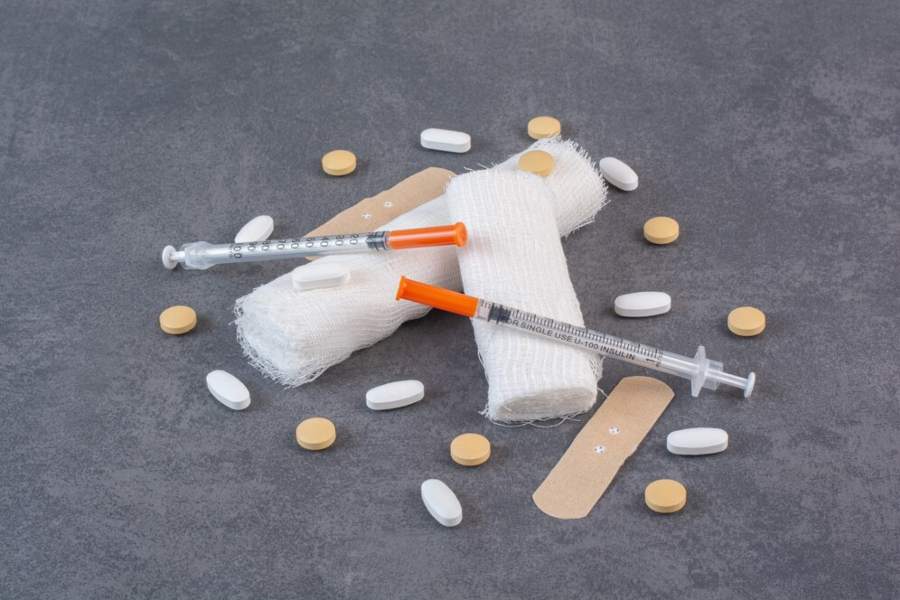Did you know that using dangerous drugs or faulty medical devices can cause severe injuries or even death?
In 2024, Pfizer agreed to settle over 10,000 lawsuits for up to $250 million. Meanwhile, multinational pharmaceutical and healthcare company Sanofi settled about 4,000 cases for around $100 million. These lawsuits claimed that Zantac, a heartburn medication, contained NDMA, a probable carcinogen that could lead to cancer.
When drugs cause injuries or adverse side effects, determining liability becomes complicated. Victims of dangerous drugs often find it challenging to find who is responsible for their injuries.
Who is truly responsible when a medication causes harm? According to drug injury lawyer Lee M. Schwalben, defective drug law focuses on the obligations of drug companies, testing laboratories, and healthcare professionals in providing safe medication for consumers.
It’s important for anyone impacted to understand who is responsible for injuries caused by dangerous drugs. This article will discuss the implications of holding a pharmaceutical company liable following an injury from a dangerous drug.
Understanding Pharmaceutical Liability
When dealing with pharmaceutical liability, it’s important for anyone impacted by dangerous drug injuries to understand the details. You must know that liability often depends on whether the drug was poorly designed, badly made, or whether the labels didn’t warn about possible risks.
If you’ve suffered injuries from a medication, determine if the pharmaceutical company acted negligently or if they provided adequate warnings about side effects. Familiarize yourself with strict liability, which might hold a company accountable regardless of fault.
When filing a claim, keep in mind that the statute of limitations may limit your options. A Redding personal injury lawyer says it’s important to evaluate a potential attorney’s experience to see if they are the right fit for your case.
The Role of Pharmaceutical Companies
Pharmaceutical companies are key in developing, making, and promoting drugs that directly affect patient safety.
You rely on these companies to give patients safe and effective medications. They conduct extensive research and testing to identify potential risks and benefits of a certain healthcare product. These pharmaceutical companies are expected to comply with industry standards and guidelines.
There are instances where companies prioritize profits over safety, leading to dangerous drugs reaching the market. If a drug causes harm, examine the company’s actions, including their transparency in reporting side effects and responsiveness to emerging safety concerns.
Patients are entitled to safe medications, and pharmaceutical companies must be held accountable for any negligence or misconduct in their processes.
Providers and Their Responsibilities
Pharmaceutical companies are largely responsible for drug safety, but healthcare providers are also important in making sure patients are healthy.
Healthcare professionals are responsible for knowing the medications they prescribe or administer. These medical professionals are expected to be knowledgeable about the medications they prescribe to patients, including potential side effects. To provide the best care, medical providers must be up to date on the latest research and guidelines in the medical industry.
Any adverse reactions or complications associated with the administration of a drug should be documented and reported to healthcare providers. If you work in the medical field, you must maintain open communication with patients about the risks and benefits of treatments.
Regulatory Agencies and Drug Approval Process
Regulatory agencies see to it that medical drugs are safe and effective before they reach the market. The Food and Drug Administration (FDA) in the U.S. oversees this process, requiring extensive testing and data from pharmaceutical companies.
Before a drug can be approved, it must undergo several phases of clinical trials, assessing its safety, efficacy, and potential side effects. These trials involve careful examination and monitoring to keep consumers safe.
Once a drug is approved, agencies continue monitoring its effects through post-marketing surveillance. This ongoing assessment helps detect any long-term problems that might come up when the drug is widely used.
These measures reduce risks and promote medication safety for the general public.
Legal Paths for Injured Parties
If you’ve suffered an injury due to a dangerous drug, understanding your legal options is important. Patients injured after taking a medical drug can file a product liability lawsuit against the drug manufacturer. The lawsuit may hold pharmaceutical companies liable for negligence, failure to warn, or defective design.
If several people were affected by the same drug, they can file a class-action lawsuit to seek compensation together. A class-action lawsuit can foster a sense of community among injured victims and allow them to share resources, potentially speeding up the legal process.
You may explore pursuing compensation through state or federal claims, which depend on your situation. Consulting a personal injury attorney can help clarify your rights and guide you through the process.
Personal injury attorneys can evaluate your case, advise you on the best legal course of action, and assist you in obtaining the compensation you deserve.
Multiple parties may be liable when you face injury from a dangerous drug. Pharmaceutical companies hold primary responsibility for their products, while healthcare providers must adequately inform you of risks. Regulatory agencies guarantee drug safety but they cannot be held liable for injuries. Understanding the roles of these various parties can help you pursue justice. If you’ve been harmed by a dangerous drug, explore your legal options to hold the responsible parties accountable for their actions.


